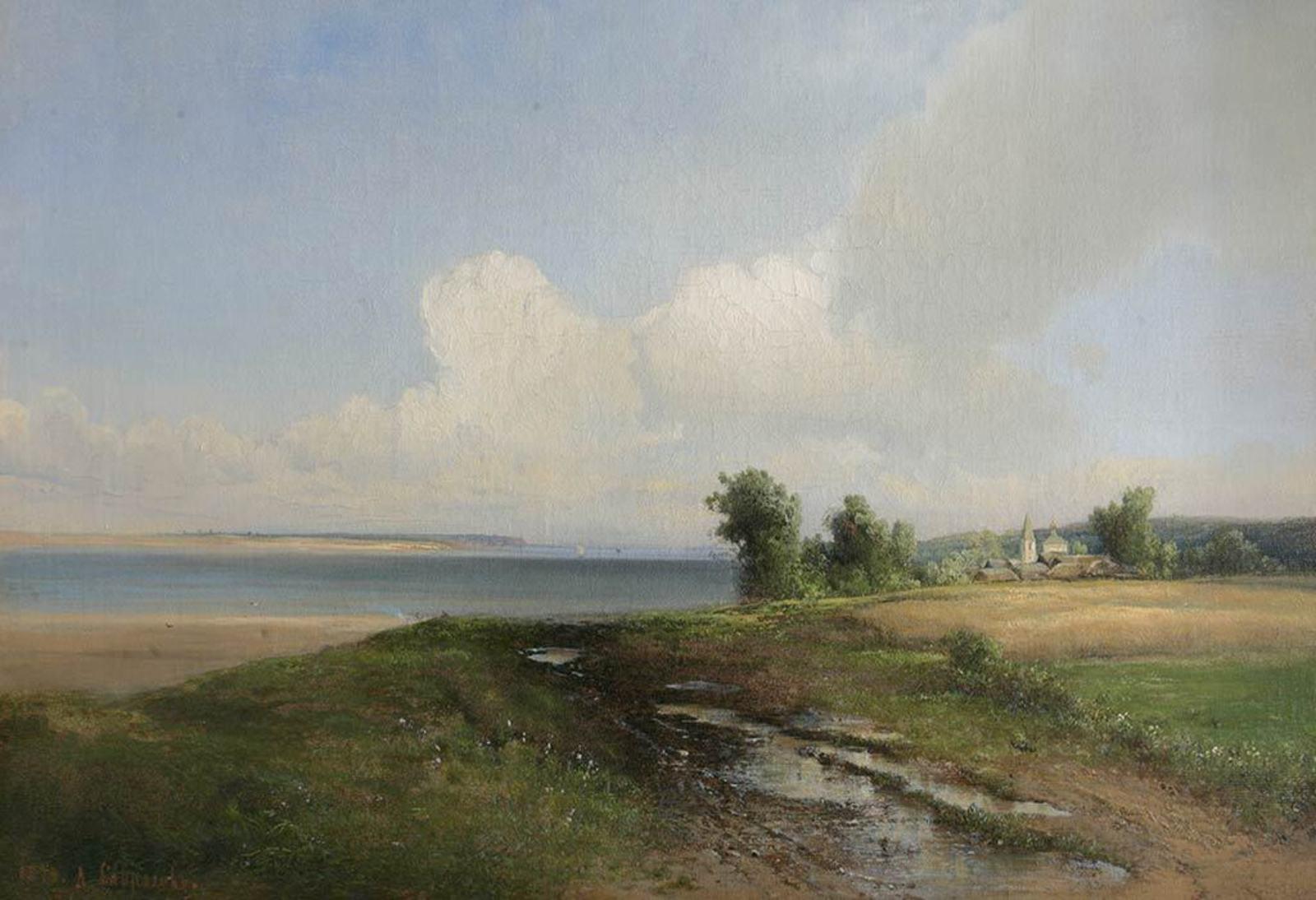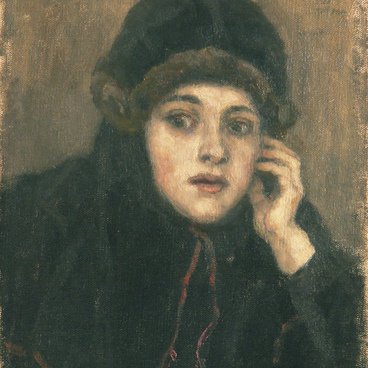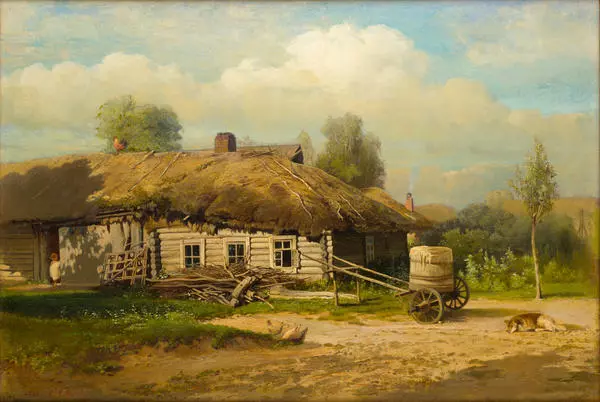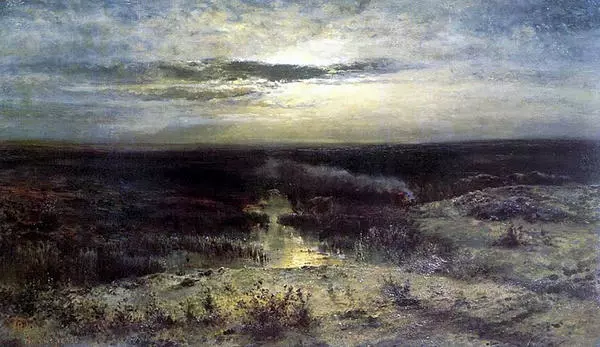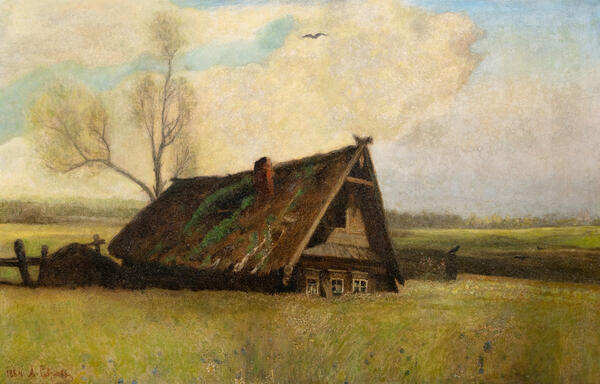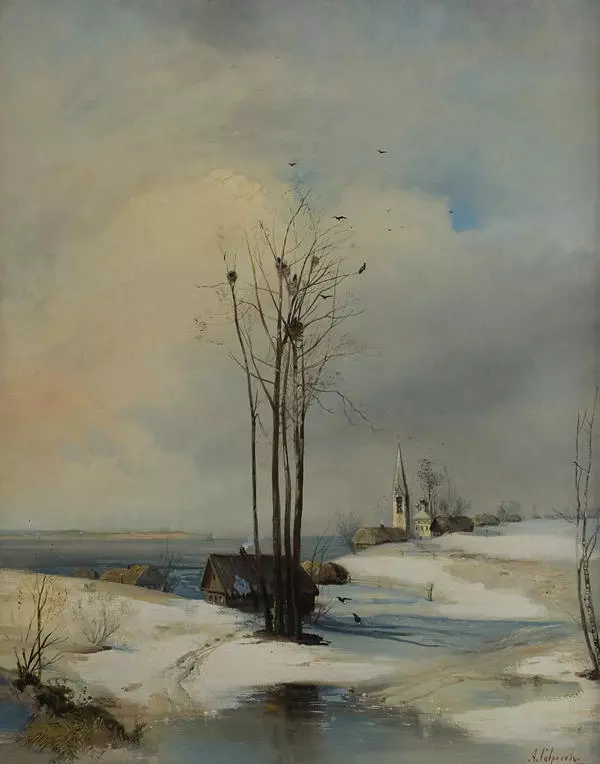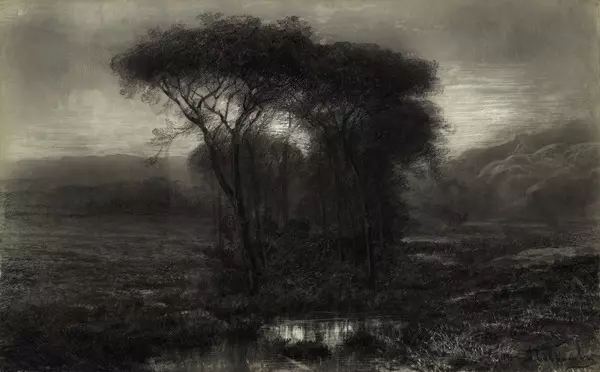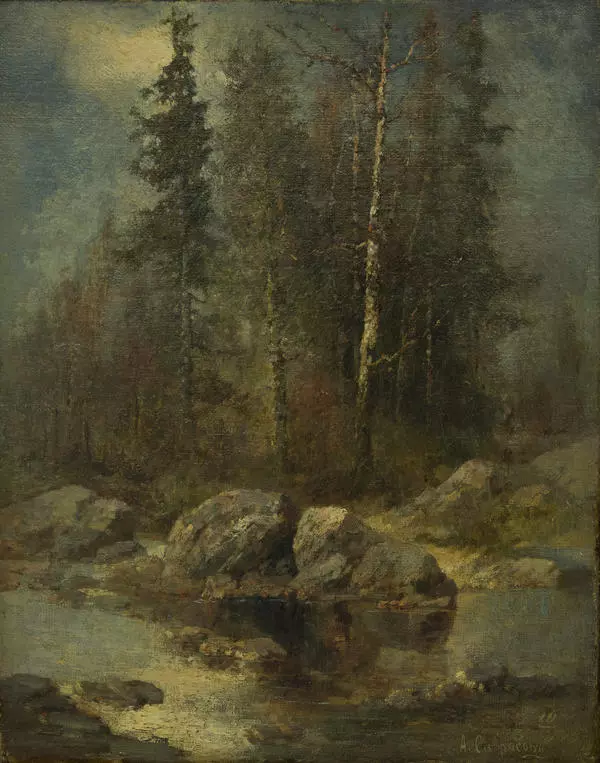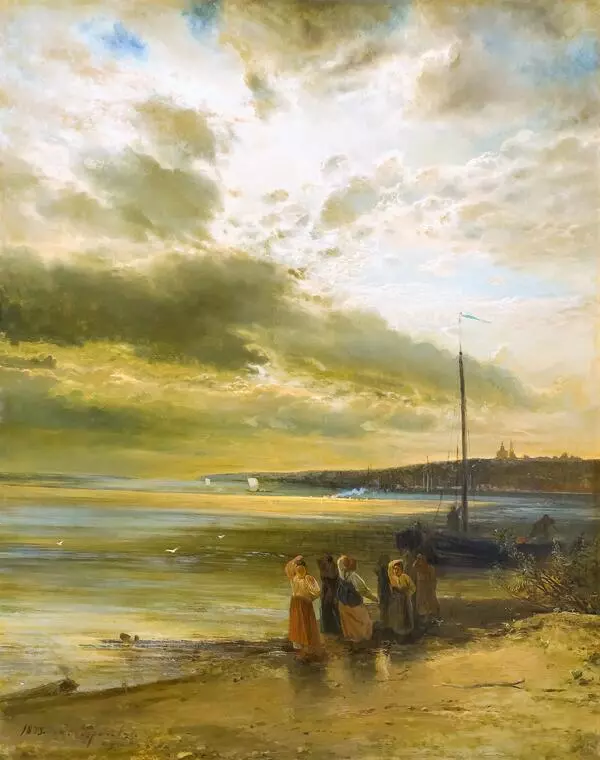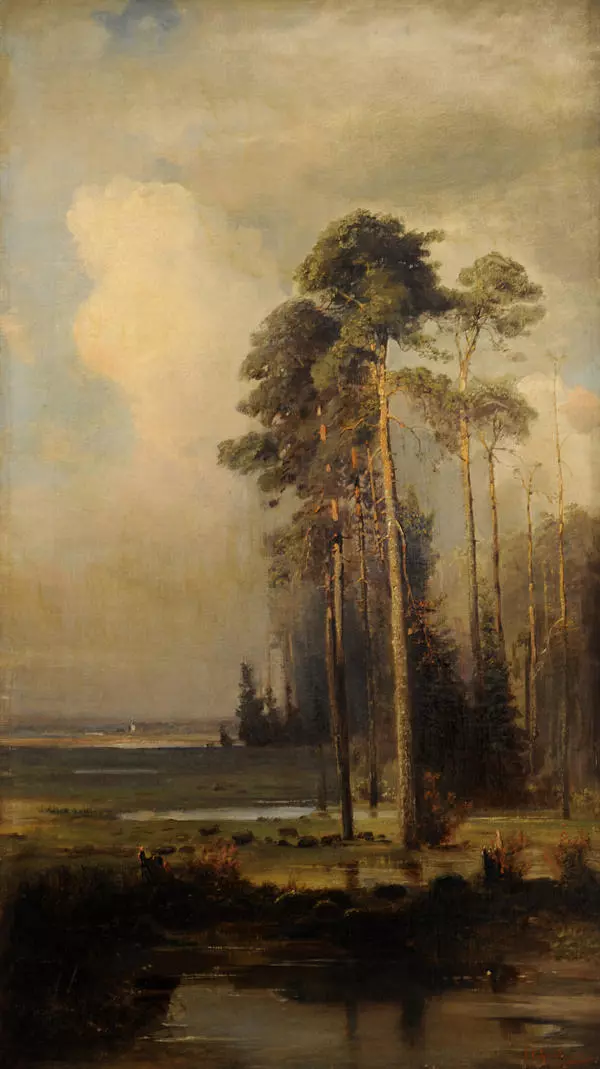The author of the painting The Volga River, Alexey Savrasov (1830-1897), was born into the family of a Moscow burgher Kondratiy Savrasov, which was later recorded in the book of merchants of the Goncharnaya quarter.
In 1862 Savrasov traveled abroad - the artist visited the World’s Fair in London, he also traveled to France, Switzerland and Germany. Since 1871 he had been mostly working in Moscow, participated in exhibitions of the Association of Traveling Art Exhibitions. He painted in the vicinity of Moscow, worked a lot on the Volga river.
One of Savrasov’s most famous paintings, The Rooks Have Come, was painted during that period. Artist Alexander Benoit wrote about that work:
He liked to draw already in his early childhood, and merchants willingly bought the works of the young artist at a low price. Contrary to the wishes of his father, who wished his son to become his assistant, and considered painting an unprofitable and useless occupation, Savrasov successfully graduated from the Moscow School of Painting and Sculpture. His teacher was landscape painter Carl Rabus.
In 1850 he was awarded the title of artist for his painting The View of the Moscow Kremlin in the Moonlight. And in 1854, the year of graduation, Savrasov presented two paintings at the exhibition of the Academy of Arts and received the title of academist. One of those works - A view in the vicinity of Oranienbaum - was purchased by Pavel Tretyakov.
That exhibition was visited by Grand Duchess Maria Nikolayevna. She purchased the picture by Savrasov Steppe with Chumaks in the Evening for her personal collection, which surprised even the teachers of the Academy.
In 1862 Savrasov traveled abroad - the artist visited the World’s Fair in London, he also traveled to France, Switzerland and Germany. Since 1871 he had been mostly working in Moscow, participated in exhibitions of the Association of Traveling Art Exhibitions. He painted in the vicinity of Moscow, worked a lot on the Volga river.
One of Savrasov’s most famous paintings, The Rooks Have Come, was painted during that period. Artist Alexander Benoit wrote about that work:

